Ten Archaeological Enigmas from Across the Globe
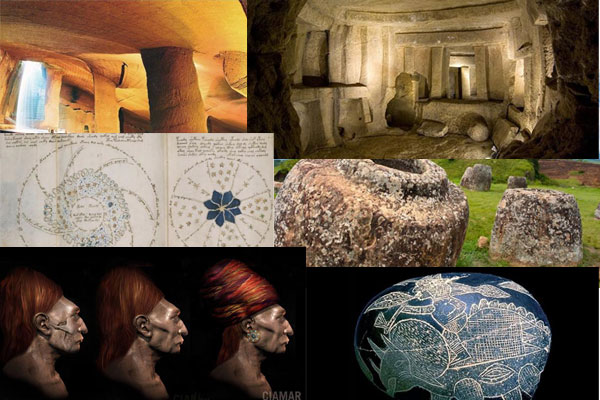
By April Holloway
The Unknown Origins of the Longyou Caves
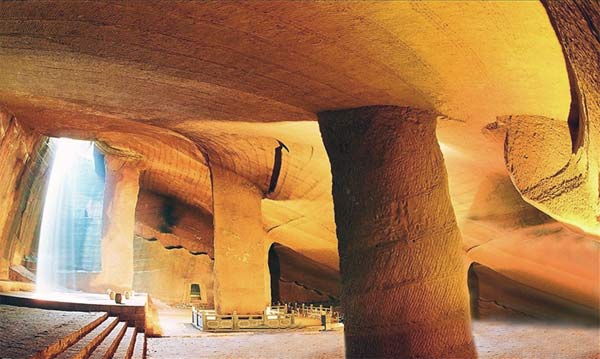
Scientists from around the world in the fields of archaeology, architecture, engineering, and geology have absolutely no idea how they were built, by whom, and why. First discovered in 1992 by a local villager, 36 grottoes have now been discovered covering a massive 30,000 square metres. Carved into solid siltstone, each grotto descends around 30 metres underground and contains stone rooms, bridges, gutters and pools. There are pillars evenly distributed throughout the caves which are supporting the ceiling, and the walls, ceiling and stone columns are uniformly decorated with chisel marks in a series of parallel lines. To date, scientists have not been able to establish who built them, how they were constructed, and why.
The Sound Effects of Malta’s Hypogeum Hal Saflieni
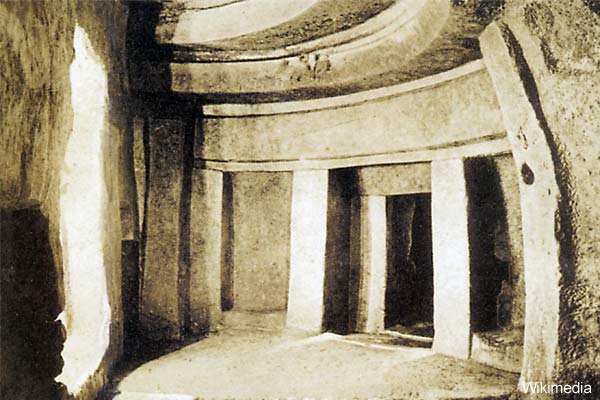
According to William Arthur Griffiths, who wrote ‘Malta and its Recently Discovered Prehistoric Temples’, a word spoken in the Oracle room is “magnified a hundredfold and is audible throughout the entire structure.” It is said that standing in the Hypogeum is like being inside a giant bell. At certain pitches, one feels the sound vibrating in bone and tissue as much as hearing it in the ear. The questions remain – was it intentional? Was the Hypogeum actually designed to enhance amplification? If so, why? Is it possible that the designers of these spaces knew something that modern scientists are just rediscovering?
The Indecipherable Voynich Manuscript

The Plain of Megalithic Jars
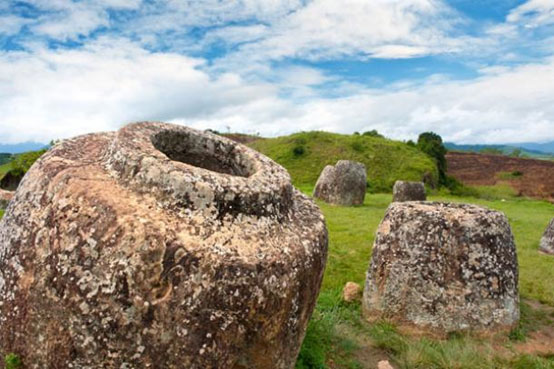
The Plain of Jars in the Xieng Khouang plain of Laos is one of the most enigmatic sights on Earth. The unusual site of thousands of megalithic stone jars scattered across nearly one hundred sites deep in the mountains of northern Laos has fascinated archaeologists and scientists ever since their discovery in the 1930s. The unusual site known as the Plain of Jars is dated to the Iron Age (500 BC to 500 AD) and is made up of at least 3,000 giant stone jars up to 3 metres tall and weighing several tonnes. Most are made of sandstone but there are others made of much harder granite and limestone. The jars appear to have been manufactured with a degree of knowledge of what materials and techniques were suitable. It is assumed that Plain of Jars’ people used iron chisels to manufacture them although no conclusive evidence for this exists. Little is known of the people who carved the huge containers and the jars themselves give little clue as to their origins or purpose.
The Paracas Elongated Skulls
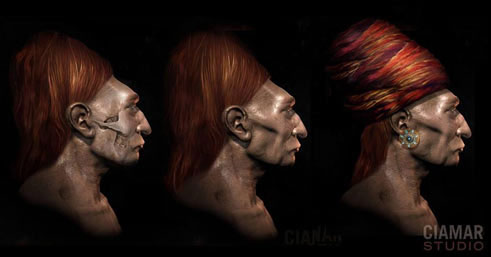
Paracas is a desert peninsula located within the Pisco Province in the Inca Region, on the south coast of Peru. It is here were Peruvian archaeologist, Julio Tello, made an amazing discovery in 1928 – a massive and elaborate graveyard containing tombs filled with the remains of individuals with the largest elongated skulls found anywhere in the world. These have come to be known as the ‘Paracas skulls’. In total, Tello found more than 300 of these elongated skulls, which are believed to date back around 3,000 years.
It is well-known that most cases of skull elongation are the result of cranial deformation, head flattening, or head binding, in which the skull is intentionally deformed by applying force over a long period of time. It is usually achieved by binding the head between two pieces of wood, or binding in cloth. However, while cranial deformation changes the shape of the skull, it does not alter its volume, weight, or other features that are characteristic of a regular human skull.
Some of the Paracas skulls, however, have a cranial volume that is up to 25 percent larger and 60 percent heavier than conventional human skulls, meaning they could not have been intentionally deformed through head binding/flattening. They also contain only one parietal plate, rather than two. The fact that the skulls’ features are not the result of cranial deformation means that the cause of the elongation is a mystery, and has been for decades.
The Ica Stones and their Strange Engravings
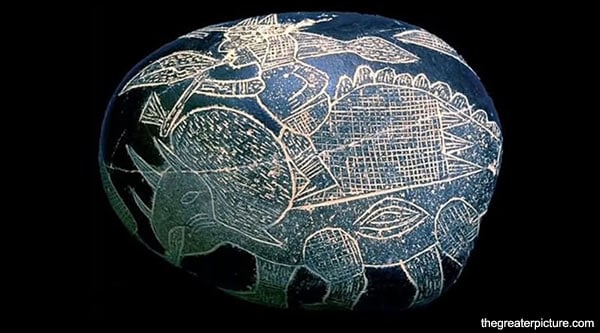
Most believe the stones are nothing more than an elaborate hoax, while others maintain that they are evidence that an ancient race of humans who possessed advanced technology coexisted with dinosaurs. Today, most maintain that the stones are nothing more than a fraud, however, others suggest that attempts to discredit the stones are merely a way to hide evidence that conflicts with mainstream perspectives. The Ica museum in which the stones are housed remains open to those who would like to interpret the mysteries for themselves.
The Ancient Artifacts of Sanxingdui
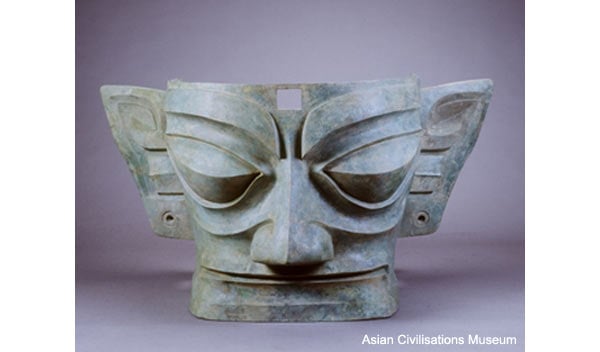
The discovery of the artifacts opened up a world of intrigue. The objects included animal-faced sculptures and masks with dragon ears, open mouths and grinning teeth; human-like heads with gold foil masks; decorative animals including dragons, snakes, and birds; a giant wand, a sacrificial altar, a 4-metre tall bronze tree; axes, tablets, rings, knives, and hundreds of other unique items. However, by far the most striking findings were dozens of large bronze masks and heads represented with angular human features, exaggerated almond-shaped eyes, straight noses, square faces, and huge ears, features which don’t reflect those of Asian people. The discovery of Sanxingdui shocked the world, but the history of the artifacts remains a mystery. Only the contents of two solitary pits reflect their immemorial and brilliant civilisation – no other artifacts like them have ever been found since. There are no historical records, and no ancient texts that speak of them, leaving experts asking what the purpose of the objects was, where the culture came from, and where they went after burying their most precious treasures.
The Giant Spheres of Costa Rica
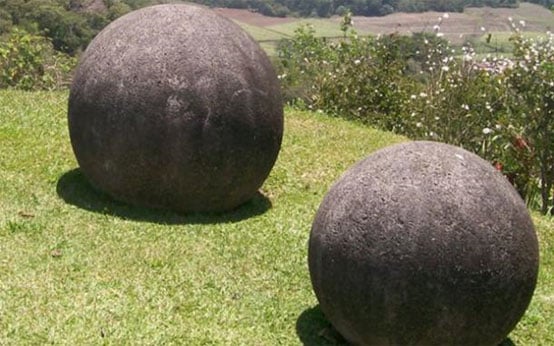
Many will be familiar with the opening scene of “Raiders of the Lost Ark” where a giant stone sphere nearly crushes Indiana Jones to death. While everyone recognises the movie as a work of fiction, the giant ancient stone spheres are not. While clearing the jungle for banana plantations in 1940 in Costa Rica's Diquis Delta region, employees of the United Fruit Company uncovered numerous large stone spheres partly buried in the forest floor.
Around 300 spheres are known to exist, with the largest weighing 16 tonnes and measuring eight feet in diameter, and the smallest being no bigger than a basketball. Almost all of them are made of granodiorite, a hard, igneous stone. Since their discovery the true purpose of the spheres, which still eludes experts, has been the subject of speculation ranging from theories about the balls being navigational aids, to relics related to Stonehenge, the product of an unknown ancient civilization or visits from extraterrestrials.
Part of the mystery surrounds the way in which they were created as the near-perfect spheres appear to have come from a quarry that was more than 50 miles away and they were created in a time in which metal tools had apparently not been invented yet. However, the biggest mystery remains what they were used for. The people who made them didn't leave any written record and there no myths or legends or other stories that are told by the indigenous people of Costa Rica about why the spheres were made.
The Stone Head of Guatemala

The discovery rapidly attracted attention, but just as quickly it slipped away into the pages of forgotten history. News of the discovery first emerged when Dr Oscar Rafael Padilla Lara, a doctor of philosophy, lawyer and notary, received a photograph of the head in 1987 along with a description that the photograph was taken in the 1950s by the owner of the land where the head was found and that it was located “somewhere in the jungles of Guatemala”. Upon tracking down the site some ten years later, Dr Padilla was devastated to find the site had been obliterated by revolutionaries. To date, no one knows where it came from, who made it, and why.
The ‘Frankenstein’ Mummies of Scotland
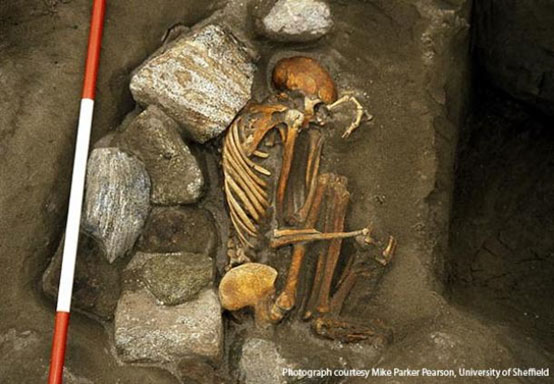
In 2001, a team of archaeologists found four skeletons at an archaeological site on the island of South Uist in the Outer Hebrides in Scotland. At first, it appeared to be a typical Bronze Age discovery, but the researchers soon discovered that the finding was far from normal. The skeletons, one male and one female, were buried in the foetal position. Initial tests revealed that the male had died in around 1600 BC and the female had died in approximately 1300 BC. However, some ten years later, further DNA examination of the remains led to a startling discovery – the two skeletons were actually made up of body parts from six different individuals. In the ‘male skeleton’, the torso, skull and neck, and lower jaw belonged to three separate men, and the ‘female skeleton’ is a composite formed from a male skull, a female torso, and the arm of a third person whose gender had not been determined.
Carbon dating revealed that the skull of the ‘female’ mummy is 50 to 200 years older than the torso. It appears that the mummies were made up of parts from people in the same families and then put together like a jigsaw to make it look like they were just one person. Archaeologists have no idea why the remains were mummified and then mixed together. However, Parker Pearson believes that the mixing of remains was done to combine different ancestries of families to create a ‘symbolic ancestor’ that literally embodied traits from multiple lineages.
From Ancient Origins @ http://www.ancient-origins.net/news-general-ancient-places/ten-archaeological-enigmas-across-globe-001736?nopaging=1
Thanks to:http://nexusilluminati.blogspot.com






 Sat Mar 23, 2024 11:33 pm by globalturbo
Sat Mar 23, 2024 11:33 pm by globalturbo

